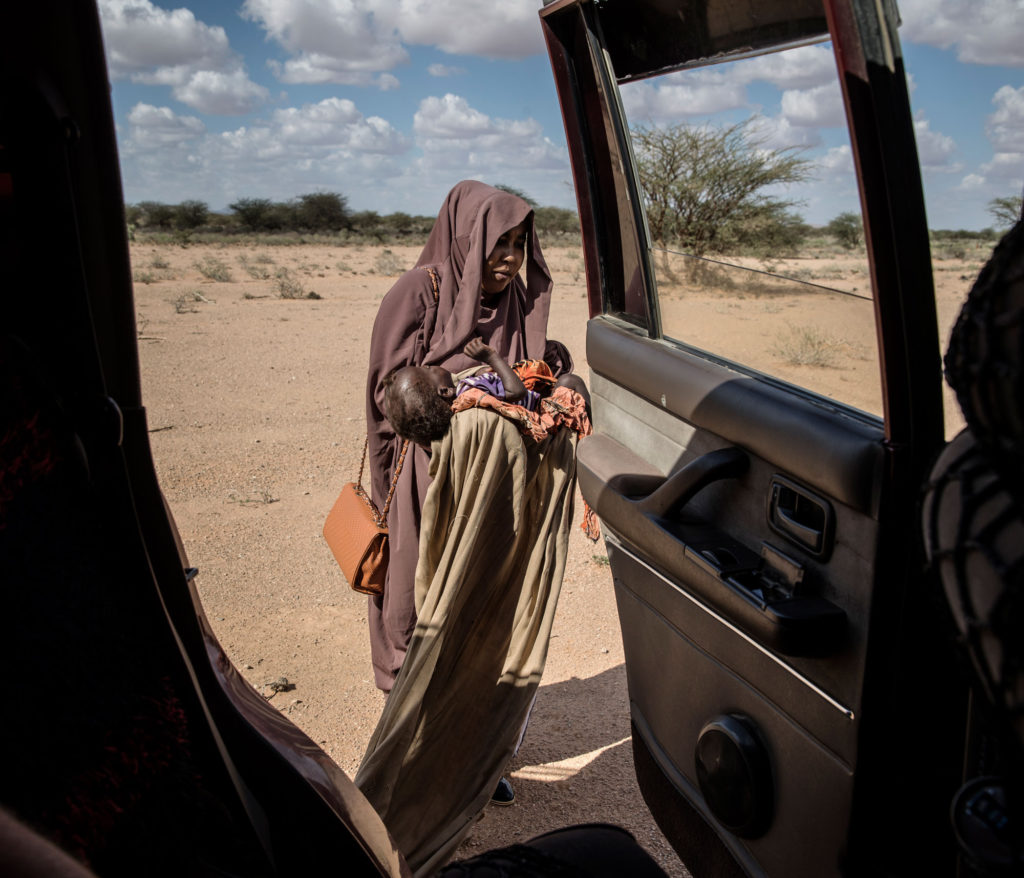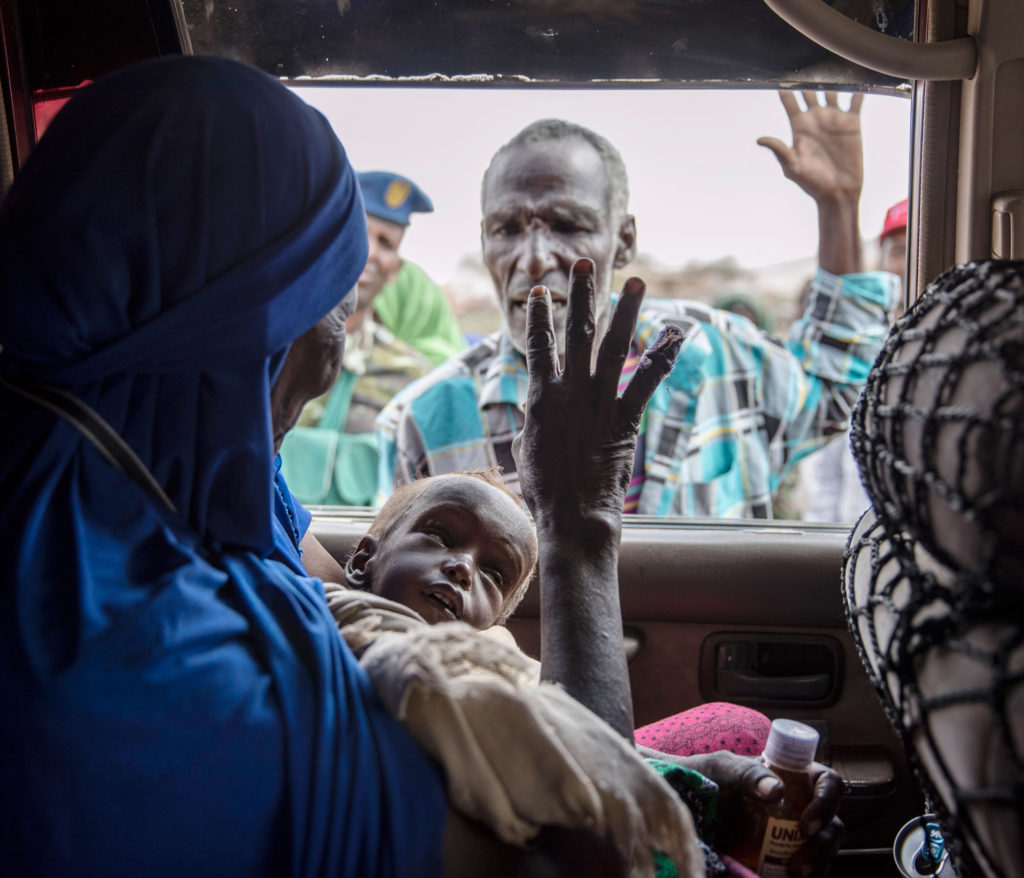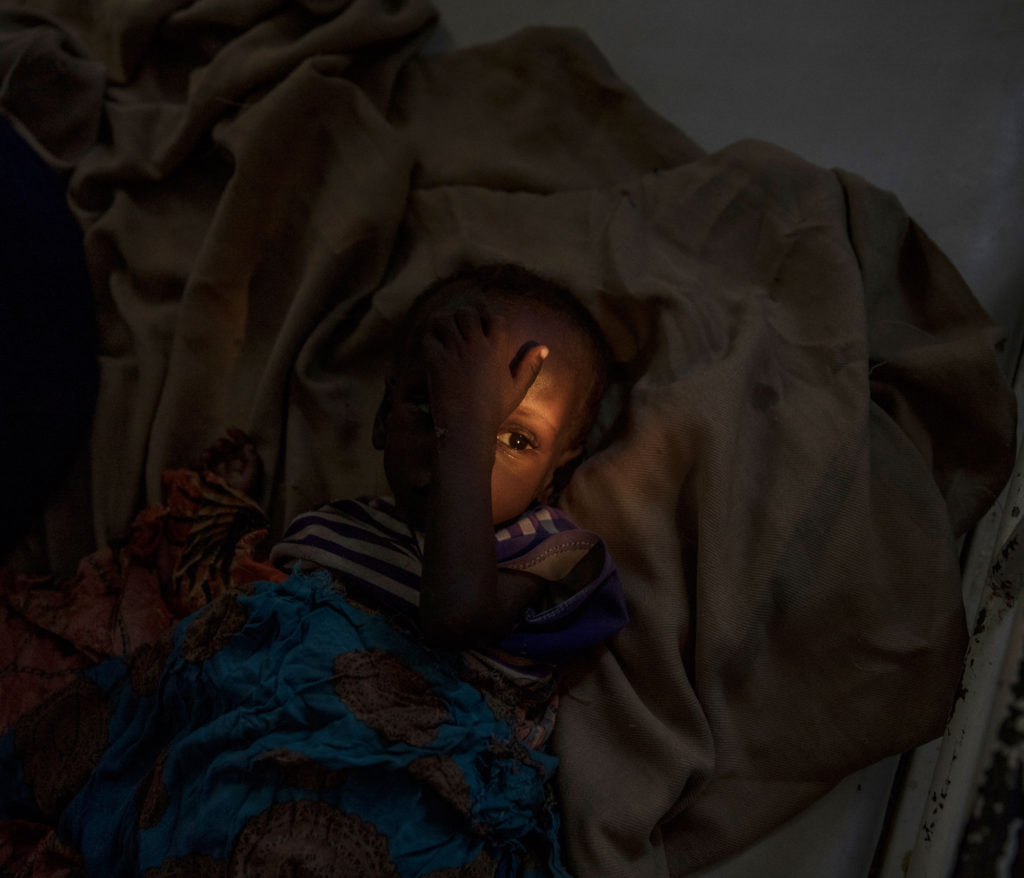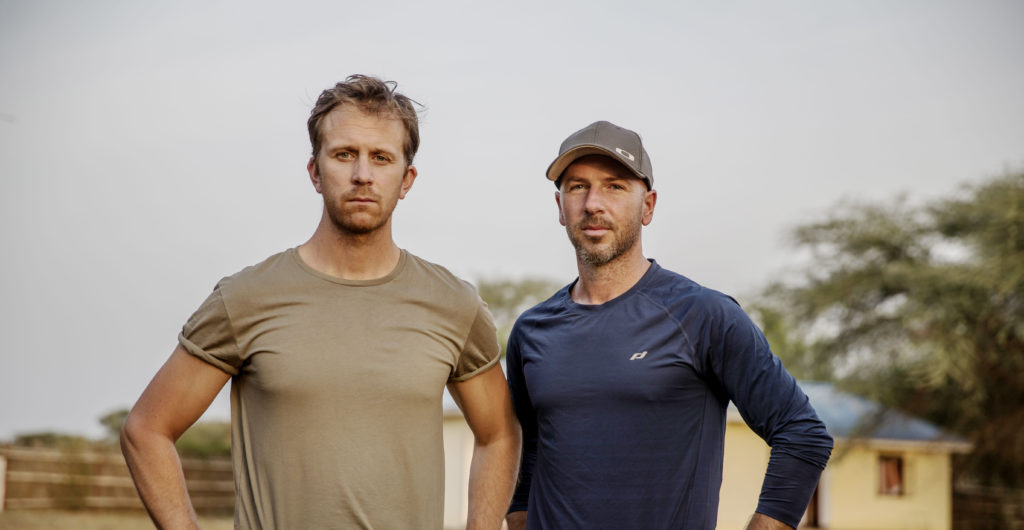Born in famine – minutes from death
TOGDHEER SOMALILAND, MAY 2017
13:06 The sun lands on everything except the little body. The shadow of a parched tree just covers its contours, but it is still boiling hot.
At 17 months old this boy, Hamsi, has never known a drop of rain. Born in drought and now very close to dying in drought.
He is one of millions. Children who find themselves at the beginning and end of life all at the same time. The red desert in Somaliland, home to hundreds of thousands of nomads, is the absolute front line, where hunger is turning into famine. Practically all the cattle have died. Gaping cadavers of goats and camels are strewn across the land. They stink and poison the ground.
Hamsi’s grandmother has carried him for hours in the hope of finding help.
We happen to be passing by.
It is 90 roadless kilometres to a hospital.
Nothing in the tormented landscape we have to cross makes rapid transport easy.
Hamsi’s life may well end here in the car.
According to the UN, 1.4 million children could die due to drought and famine in Africa and Yemen before the end of the year.


13:30 A white cloud billows into the car and the hot air tastes of dust again. Visibility is barely half a metre beyond the bonnet. It has been two years since the ground was last wet here.
The needle on the speedometer – my eyes are drawn to it constantly – dances between 15 and 60 kilometres per hour. One minute the car leans to the right, the next it lurches to the left.
Alongside me sits an old woman with a purple veil. She holds her grandchild tightly. Weak coughing can be heard. A sign of life. Despite everything.
The scale of the hunger is the worst since the Second World War. A total of 20 million people are in need of emergency aid.
13:50 Hamsi’s eyes roll backwards. The car brakes hard as a troop of apes rush across the road. The boy’s grandmother bangs her head on the driver’s headrest, almost letting go of the bundle in her arms. Hamsi doesn’t make a sound.
Six months ago it was already clear that the situation was going to be extremely serious in Somalia, South Sudan, Ethiopia, Nigeria and Yemen. And yet the UN is still short of the 4.4 billion dollars it needs to meet the need for emergency aid.
14:30 On Hamsi’s chest there is nothing separating skin from bone. His stomach is round where the muscles are unable to hold the organs in place, and everything else is thin, brittle like the branches of the parched tree. The first impression is that the skull is too big, but it is the body that is too small.
His grandmother tells us he has been sick for four months, but it is only in the past two weeks that his body has changed. He is unable to keep down any of what little food she has to give him.
We moisten his lips with water, perhaps a centilitre runs down into his throat. Hamsi coughs, but does not vomit.
This boy is a victim of a famine that was never hard to predict. The alarm bells were ringing as much a year ago. Then when the rains failed to come again in the autumn and the cattle began dying all across East Africa, there was still time to act. And yet here he lies.
About to die.
He has not even lived for one and a half years, but he has the face of an old man. Sunken eyes and a pointed chin.
How far is it to the hospital now?
At least an hour.
In all the countries affected, the situation is being made worse by war and armed conflict.


15:00 Suddenly, his breathing becomes more laboured. Hamsi gasps and a whistling sound comes with every breath.
Time is running out for this boy.
If he had been in a modern hospital right now, saving his life would not have been particularly difficult. Tube-feeding with nutrients and fluids in small doses to restore balance in the body.
In this boiling cab, there is little we can do. We have a few packets of biscuits, but any solid food risks making the boy vomit and lose more fluid.
The car drives across a dry riverbed. This is supposed to be the rainy period, all green and cool. But not this year, and not last year either. Hamsi’s grandmother is carsick and vomits into a bag. Our interpreter offers to hold the child, but she will not let him go.
Due to a lack of healthy food, clean water and health care, diseases that would otherwise be easy to cure quickly become fatal.
15:20 He is not going to make it.
We need to think. How does CPR differ between a child and an adult? Always begin with five breaths for a child, that was it, wasn’t it?
Might he have some infectious disease? Cholera? The mouth shield is in the first aid kit, but it is designed for an adult face.
Will the thin ribs stand up to compressions?
Do we have any idea what we are doing?
Hamsi is showing just the whites of his eyes. I stare at his purple and white striped top.
It is such a stark contrast with the situation. It was not sewn for a child to die in.
In 2011, 260,000 people died in Somalia due to famine. 160,000 of them were children.


16:30 “He might have survived until the evening, but he could well have been dead by now.”
It is half an hour since the nurses at Burao’s hospital took Hamsi from his grandmother’s arms with practised hands. A white fluid is now running gently down his throat.
The situation remains critical, but something in the self-assurance of the staff causes us to relax.
Dr Yusuf Dirir Ali checks the boy over and lightly pinches his arm. The skin does not react. It wrinkles and hangs like on an old man.
“See, no elasticity at all, one of many signs of severe malnourishment.”
He knows what he is talking about. In just a few weeks, he has seen hundreds of children with the same symptoms. Row upon row of children’s beds. Above them a sprawling forest of drip stands.
“The situation is getting worse and worse, and the worst of it is that there is no end in sight.”
A nurse places Hamsi on some scales. The reading is six kilos. Less than half the normal weight of a European baby of the same age.


HELP US TO HELP
Every day, more children are becoming dangerously malnourished
and they need your help right now.
Swish your donation to 902 0033
Together we can save children’s lives. Thank you.

